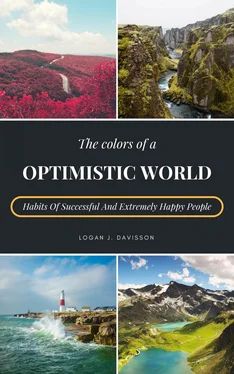So do something good for your health and ensure more inner balance in your everyday life. You will see that after a short time, thanks to a strengthened immune system, you are less susceptible to diseases, feel fitter and more vital all around, need less sleep and your digestion functions excellently. Some scientists attribute the reduction of inflammatory processes and cancer growth, for example, to the reduction of stress factors. Your physical long- term health should be a great motivator to provide more balance! By the way: stress typically leaves grim wrinkles on your face - so you will be able to see your inner balance!
Stress and the psychological consequences
But not only on the physical level long-term stress has consequences, but also on the mental level. Under constant strain we may feel helpless, determined by others, overwhelmed and listless. Some people react more and more irritated, are in a bad mood and can hardly concentrate anymore. In addition to poor concentration, creative blockages or forgetfulness can also occur. Sleep disorders, increased alcohol consumption, listlessness, sexual frustration, eating disorders or the inability to relax can also be consequences of prolonged stress situations. ADS, ADHD, burnout and anxiety disorders can also be secondary diseases due to prolonged stress situations. These are an alarm signal that the recovery phases after stress are not long enough. Thus the hormone level of the body cannot regulate itself and the maintenance measures of the body cannot begin. On the psychological level it means that the stress-inducing thoughts, which are usually based on fear, do not come to an end. On the one hand, overburdening due to the combination of career, leisure and family can be an external factor for stress and on the other hand, a negative inner attitude towards different situations can lead to internally produced stress.
Many people realize only late that they are in a stress cycle, which results from the fact that stress and negative thoughts influence each other. The deeper a person slides into the stress cycle, the more difficult it becomes to change the mental attitude to "inner balance", as the stress intensifies the negative thoughts, which in turn intensify the stress.
The connection between body and mind
Fortunately, our body signals us every second what it needs. Unfortunately, most of us have forgotten to listen to these sensitive messages or can no longer perceive them. So one morning we wake up with horrible neck tensions and wonder why we suddenly feel this strong pain. Suddenly, however, these pains do not come at all, we did not want to admit the previous less intrusive signs and suppressed them.
But why do we no longer follow our body feeling and listen to our innate instincts? Because in dangerous situations it can make sense to put your own feelings or aches and pains aside for a short moment in order to survive. When we are in a state of stress, this is exactly what happens: we no longer pay attention to our feelings and physical signs. Then lunch must be cancelled when time is short due to constant deadline pressure. The stress to which we are exposed in everyday life (or which we allow to happen!) is comparable to a real life- threatening situation for our body. If this stress condition persists for a longer period of time, we also ignore our physical and emotional needs over a longer period of time to ensure survival in an achievement-oriented society.
In this way, we distance ourselves more from our body every day until it finally makes it clear with clear signals that can no longer be ignored that the emotional and physical limits have been reached. Through the various exercises presented in this book, you will give your body and mind a well-deserved break and learn to pay more attention to your physical and mental health. You will notice that, over time, you will be able to act less through rational considerations and more through your stronger intuition. This means, for example, that you no longer know that you should drink at least one litre of water today, but that you feel your thirst. In this way you also feel when your physical and emotional limits have been reached - this is inner balance.
How inner balance shows itself in everyday life
So what does a day with inner balance look like? Now imagine the five biggest stress factors in your daily life and think about what it would be like without them. The ringing of the alarm clock would not cause you to be in a bad mood, a missed train would not make you go off your feet and a discussion with your unloved boss would not bring you to the brink of madness. Instead, the ringing of the alarm clock means a new day full of surprises and opportunities awaits you, the missed train is the perfect opportunity to pass by the bakery and dust off a second breakfast and the discussion with the boss is a way to straighten out the relationship between your boss and you and possibly explore new career prospects.
Here the everyday circumstances have not changed, but the attitude towards them and this means a big change for your emotional condition. As soon as a certain degree of inner balance is reached, it is also less difficult to change stress-inducing external factors sustainably. If you are relaxed, you are more likely to be prepared for a change of job or a spatial change, so you are open to new ideas. In most cases, prolonged stress often brings with it the feeling of "not being able to see the forest for the trees" or not being able to enjoy life itself. Inner balance also gives you the opportunity to feel grateful for the smallest things in life, to be happier, to master challenges better and to lead a more self-determined life.
Resilience
The small word "stress" has long since become a much-used fashion term, and not without reason. The number of mental illnesses due to overuse, especially in the workplace, is constantly increasing and more and more people are feeling the consequences of prolonged stress at the deterioration of their mental and physical health. In recent years, the number of days lost due to mental illness has risen dramatically - and continues to rise. It is therefore not surprising that scientists are increasingly asking themselves what helps people become more resistant to stress: Resilience - a seemingly invisible force that makes some people incredibly resilient.
The term originates from materials science and describes a substance that returns to its original shape after heavy exposure. In the psychological field, resilience thus describes the ability to find one's way back to oneself even after heavy stress, to find one's way back to inner balance and to set healthy limits in dealing with stressful situations. We find ourselves increasingly in a life situation in which we have ceased to listen to our physical, intuitive signals, but rather to orient ourselves predominantly towards the messages we receive from outside and make these our own behavioural repertoire.
Already in childhood the foundations for this resistance are laid. What is important here is a reliable person of trust, the assumption of responsibility in line with development, the opportunity for personal growth, continuous support, strong role models, personal freedom and healthy boundaries. Of course, not every human being has exactly these resources available in his childhood and accordingly we are all differently resistant when it comes to dealing with stress. Fortunately, we as adults also have the possibility to strengthen our resistance through various methods.
What causes the inner balance to falter?
We are balanced when we are completely with ourselves and pursue our individual goals, live in our rhythm and follow our own ideas - in other words, live very attentively. Of course, we can look for the reasons for our own imbalance in external factors, but this usually only helps us to a limited extent. You find your job too nerve- wracking? Then you may have been thinking about changing your job for some time. If you are already in a bad mood when thinking about your colleagues, a new workplace with a new environment can help. Can: After all, you don't know whether the new colleagues are really nicer. So in most cases it is not enough to change the external factors that contribute to a stressful everyday life, but a large part of our inner balance depends on internal factors, i.e. thought constructs.
Читать дальше












